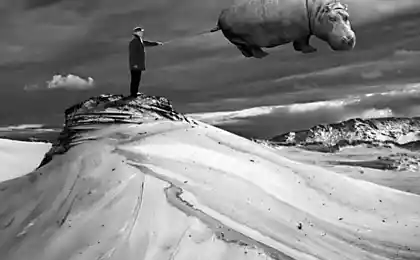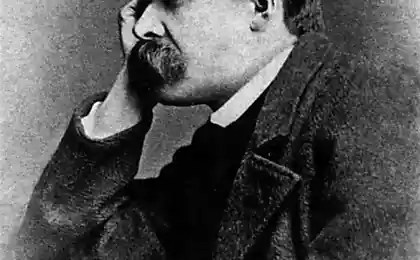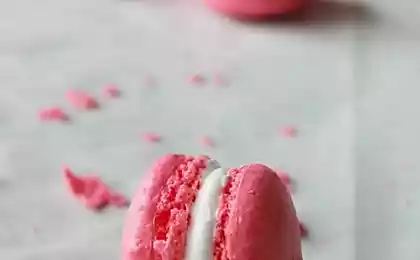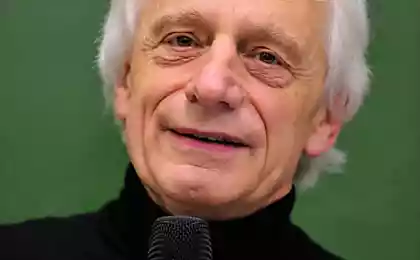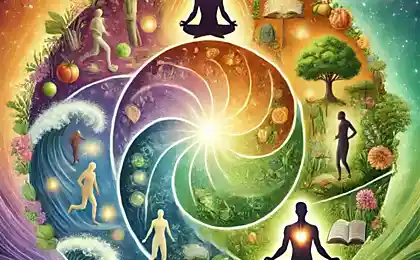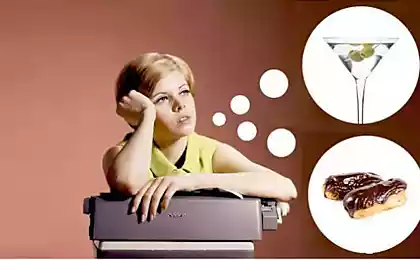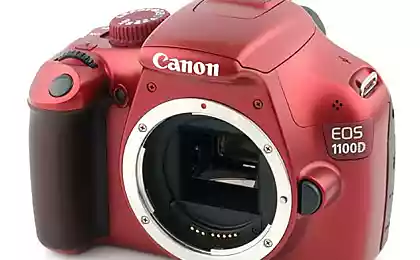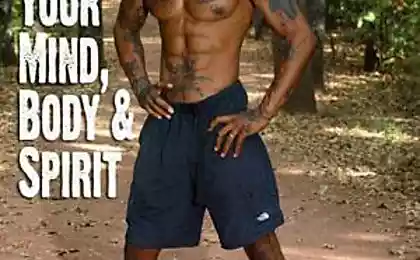312
How to understand that your hobby has become a hidden addiction
The line between addiction and addiction is not always obvious. Therefore, it is so important to notice the warning signs that you are losing control.

Mary always considered herself a creative person. Starting with simple drawing on weekends, she gradually became interested in digital painting. At first it was an hour or two after work, then an entire evening, and a year later she found herself spending up to four in the morning on a tablet, ignoring friends' calls and missing appointments. Work began to suffer, relationships collapsed, but it seemed impossible to stop. Familiar story?
The modern world offers us an infinite number of ways of expression and entertainment. Hobbies become not just a way to spend time, but part of our identity. We collect, play, create, learn new skills. But where is the line between healthy addiction and destructive addiction?
It's important to understand: Hobby addiction can develop over the years, masquerading as self-development and creative growth. It is no less dangerous than chemical addiction, as it destroys social ties, careers and mental health.
Psychology of turning passion into dependence
Neuroscientists from Stanford University have found that the mechanism of behavioral addiction formation is identical to chemical. The dopamine reward system is activated in the same way, regardless of whether you enjoy alcohol or reach a new level in the game.
A key role is played by the so-called compulsiveness cycle. At first, activity brings true pleasure and a sense of achievement. The brain then adapts, requiring more time and intensity to produce the same effect. Finally, a person continues to engage in activity not for pleasure, but to avoid discomfort from its absence.
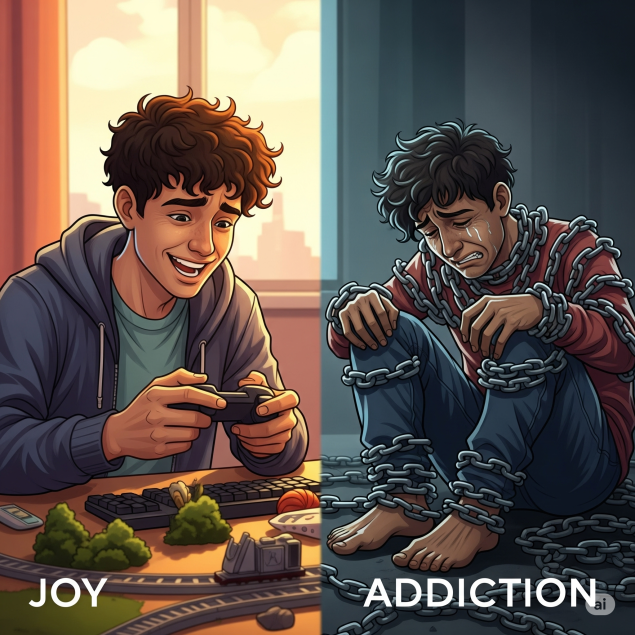
Interesting fact.
A study from the University of Nottingham found that people with behavioral addictions often have reduced activity in the prefrontal cortex, the brain region responsible for self-control and decision-making. This explains why “just pulling yourself together” is impossible.
Red flags: when to sound the alarm
Checklist of warning signs
✓ You lose track of time by engaging in a hobby, regularly “failing” for several hours
✓ There is irritation or anxiety when you can not do your favorite thing
✓ Hobbies begin to negatively affect work, school, or relationships
✓ You hide from loved ones how much time or money you spend on hobby
✓ Attempts to reduce the time spent on a hobby, cause severe discomfort
✓ Other interests and responsibilities take a back seat
✓ You continue to engage in a hobby even when it no longer brings pleasure.
Escalation of behaviour
Dmitry began collecting vintage watches as a way of investing. Three years later, his apartment turned into a warehouse, his credit card was blocked due to debts, and his wife filed for divorce. He continued to convince himself that it was a “reasonable investment.”
The escalation is manifested in the constant increase in rates. The player needs increasingly complex games and longer sessions. The artist needs more and more expensive materials and equipment. Amateur athletes need more and more intense training, despite injuries.
Types of Hobby Addiction
Digital dependency
Gambling, addiction to social networks, compulsive shopping online. The feature is almost unlimited access and the absence of natural barriers to stop.
Collecting
From stamps to antiques. The danger lies in the illusion of investment value and the desire to “complete” the collection, which is in fact unattainable.
Physical activity
Sports addiction, including running, gym, extreme sports. Masquerades as health care, but can lead to serious injuries and social isolation.
Creative addictions
Compulsive drawing, music, writing. Often accompanied by perfectionism and fear of criticism, which paradoxically reduces the quality of creativity.
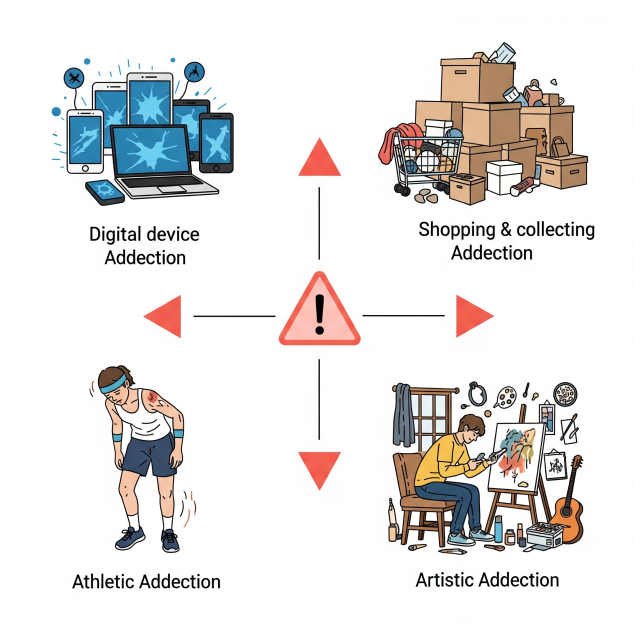
Practical strategies for regaining control
The “Temporary Boundaries” method
Set a clear time frame for your hobby and use timers. Start with realistic limits, such as no more than 2 hours a day. Gradually adjust time according to the impact on other aspects of life.
Replacement technique
Do not try to give up the hobby completely - it will lead to a breakdown. Instead, gradually replace the time spent on addiction with other activities. Social activities are ideal - meetings with friends, sports in a team, volunteering.
The 24-hour rule
Before any significant purchase or hobby-related decision, wait a day. Ask yourself, “Do I really need this?” Impulsive decisions are a sign of losing control.
“The difference between passion and obsession is that passion adds value to your life and obsession takes it away.” Dr. Anna Lembke, author of The Dopamine Nation
Maintenance of the Activity Journal
Write down the time spent on the hobby, your emotional state before and after, and the impact on other activities. In a month you will have an objective picture of the situation.
Creating Access Barriers
Make it harder for you to access the subject of addiction. Remove the game console in the closet, remove applications from the phone, give credit cards to the partner. Every step is an opportunity to change your mind.
When to seek professional help
Independent attempts to control the situation are not always effective. Contact a specialist if:
Hobbies seriously affect your financial situation, work or relationships. You experience symptoms of depression or anxiety when trying to limit the time you spend engaging. Family members express serious concern about your behavior.
Modern treatments
Cognitive behavioral therapy is 70% effective in treating behavioral addictions. Mindfulness techniques, group therapy and in some cases medical support are also used.
Prevention: How to maintain a healthy relationship with a hobby
The best strategy is to prevent addiction. Regularly ask questions: “What does this hobby add to my life?”, “Am I sacrificing important things for it?”, “Can I easily give it up for a week?”
Develop multiple interests simultaneously. This reduces the risk of excessive fixation on one activity. Maintain social ties unrelated to your hobby. Regularly evaluate the balance between hobbies and other aspects of life.
Remember: A healthy hobby enriches life, develops skills and brings joy. Addiction narrows the world down to one activity, isolating it from everything else. The line is thin but critical to quality of life.
The story of Mary, with which we began, had a happy continuation. Realizing the problem, she turned to a psychologist, set a clear time frame for creativity, and found a community of artists to socialize. Today, digital painting brings her joy again without destroying other aspects of life.
Your hobby should be a source of energy, not a consumer. A source of connection, not isolation. The reason for pride, not shame. If not, it is time to take action. The sooner the better.
Glossary of terms
Dopamine reward system
Neurochemical mechanism of the brain responsible for feelings of pleasure and motivation. With addiction, the system fails, requiring more stimulation to achieve the same effect.
Compulsiveness cycle
The three-stage process of addiction development: obtaining pleasure, adaptation and tolerance, compulsive behavior without pleasure.
Prefrontal cortex
The area of the brain responsible for planning, decision-making and impulse control. With addiction, its activity decreases.
Behavioral dependence
Obsessively performing certain activities not related to substance use but causing the same changes in the brain and behavior.
Escalation of behaviour
A gradual increase in the intensity, frequency, or riskiness of actions to achieve the same level of satisfaction.
Cognitive behavioral therapy
A psychotherapeutic method aimed at changing destructive thoughts and behavioral patterns through awareness and practice of new strategies.
Mindfulness
Practice conscious presence in the moment to help develop self-control and reduce impulsivity.


